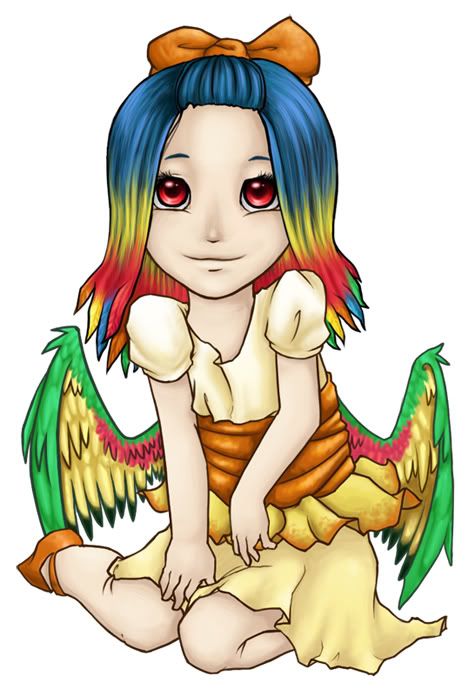
Scientific name:
Trichoglossus haematodusFamily: Psittacidae
DescriptionThe Rainbow Lorikeet is very colourful as its name suggests – almost every colour of the rainbow is found on its feathers. They are not large birds, ranging from 25-30 cm (9.8-11.8 in) in height, and with a wingspan of about 17 cm (6.7 in). Both sexes look alike, with a dark blue or violet-blue head and stomach, bright green back, tail and wings, an orange and yellow breast, and bright red beak and eyes. They are often seen in loud and fast-moving flocks, or in communal roosts at dusk.
DistributionThe Rainbow Lorikeet occurs in coastal regions across northern and eastern Australia, with a local population in Perth (Western Australia), initiated from aviary releases. It is found in a wide range of treed habitats including rainforest, woodlands and coastal bush, as well as in well-treed urban areas.
FeedingRainbow Lorikeets feed mainly on pollen and nectar, and possess a tongue adapted especially for their particular diet. The end of the tongue is equipped with a papillate appendage adapted to collecting nectar from flowers. They also eat fruits, seeds and some insects.They are frequent visitors at bird feeders that supply lorikeet-friendly treats, such as store-bought nectar, sunflower seeds, and fruits such as apples, grapes and pears.
PersonalityRainbow Lorikeets are very social birds, often gathering in huge chattering, shrieking flocks. Active and intelligent, their bright cheery personality matches their colorful feathers. They are affectionate, curious, extroverted and clowny and exhibit some unique behaviors. Some like to wrap themselves up in a blanket for sleeping. At times, they can even be seen sleeping on their backs. They are capable of aggressive behavior if their territory and possessions are not respected. They are demanding in care requirements (especially diet preparations) and require a lot of attention.
In many places, including campsites and suburban gardens, wild lorikeets are so used to humans that they can be hand-fed. The birds gather at parks in huge, noisy flocks to feed, and will happily settle on arms and heads to consume the treats they are offered. Semi-tame lorikeets are common daily visitors in Sydney and Melbourne backyards, often by the dozens.
Sources:
http://www.birdsinbackyards.net
http://en.wikipedia.org/wiki/Rainbow_Lorikeet
http://www.avianweb.com/rainbowlorikeet.html3.
Rainbows are visions, but only illusions.








 Scientific name: Trichoglossus haematodus
Scientific name: Trichoglossus haematodus


 Ophelia the painted kitty.
Ophelia the painted kitty.  Jedi the painted kitty.
Jedi the painted kitty.  Ashori the Feather-tailed cat.
Ashori the Feather-tailed cat. 









